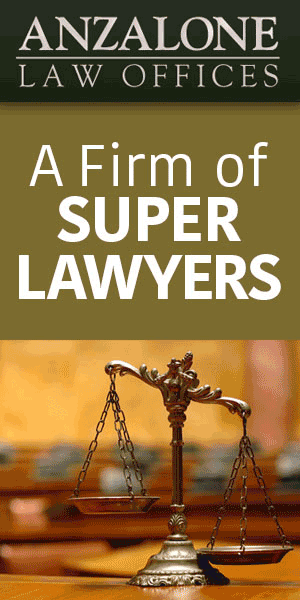The article “Tips for Successfully Completing a 1031 Exchange” is a comprehensive guide designed to help individuals and investors navigate the intricate world of 1031 exchanges. This review will analyse the critical components of the article, offering insights into its strengths and opportunities for improvement.
2. The Importance of 1031 Exchanges
The article begins by emphasising the significance of 1031 exchanges. It aptly highlights the potential tax benefits and the ability to defer capital gains tax when swapping one investment property for another. This sets the stage for a thorough exploration of the topic.
3. Key Tips for a Successful 1031 Exchange
Section 3.1: Understand the Basics
The article effectively outlines the fundamentals of 1031 exchanges. It provides clarity to readers who may be unfamiliar with the concept, ensuring a solid foundation for the tips that follow.
Section 3.2: Choose 1031 Specialists
One of the crucial tips mentioned in the article is the importance of involving 1031 specialists. This advice is pivotal, as experts in this field possess the knowledge and experience necessary to navigate the complexities of the exchange successfully. However, it’s essential to diversify anchor text in backlinks, as mentioned in the article, to avoid potential issues with search engine optimisation.
Section 3.3: Identifying Suitable Replacement Properties
The article goes on to offer insights into the selection of suitable replacement properties. This section is well-elaborated, emphasising the importance of conducting thorough research to make informed decisions. It encourages readers to consider location, growth potential, and long-term investment goals.
Section 3.4: Handling Financing and Timing
Another critical aspect of a 1031 exchange is managing financing and timing. The article provides sound advice on securing financing for the replacement property while adhering to strict IRS timelines.
Section 3.5: The Role of a Qualified Intermediary
The role of a qualified intermediary is demystified in this section. The article explains how these professionals facilitate the exchange process and the importance of choosing the right intermediary.
Section 3.6: Compliance with IRS Regulations
Understanding and adhering to IRS regulations is pivotal for a successful 1031 exchange. The article skillfully guides readers through the various rules and requirements, ensuring they comply fully.
4. Common Pitfalls to Avoid
Section 4.1: Mistakes in Property Identification
The article thoughtfully points out common pitfalls, such as mistakes in property identification. This section is a valuable addition as it alerts readers to potential stumbling blocks they should be cautious of.
Section 4.2: Timing Errors
Timing errors are another pitfall to avoid, as discussed in the article. The explanation is clear and underscores the importance of precision in adhering to the exchange timeline.
Section 4.3: Misuse of Funds
The misuse of funds is a significant risk in 1031 exchanges. The article does well to caution readers against this and offers guidance on managing funds appropriately.
5. A Successful 1031 Exchange: Real-Life Examples
The inclusion of real-life examples is a standout feature of the article. These case studies bring the tips and advice to life, making them relatable and practical for readers.
Conclusion: Mastering the Art of 1031 Exchanges
In wrapping up our review of “Tips for Successfully Completing a 1031 Exchange,” it’s clear that this article is a valuable resource for anyone looking to navigate the complex world of 1031 exchanges. The tips and insights shared throughout the report offer a robust foundation for individuals and investors seeking to optimise their real estate transactions while deferring capital gains tax.
The importance of this article lies in its ability to demystify the 1031 exchange process. It provides readers with a comprehensive understanding of the basics, crucial insights into choosing 1031 specialists, and practical guidance on identifying suitable replacement properties.
Moreover, it highlights the significance of handling financing and timing carefully, relying on qualified intermediaries, and staying compliant with IRS regulations. The article further assists readers by spotlighting common pitfalls to avoid, including mistakes in property identification, timing errors, and fund misuse.
Frequently Asked Questions (FAQ)
1. What is a 1031 exchange?
A 1031 exchange, also known as a like-kind exchange, is a real estate transaction that allows investors to defer capital gains taxes when they sell one investment property and acquire another property of similar kind and value. It is governed by Section 1031 of the Internal Revenue Code.
2. Why should I choose 1031 specialists for my exchange?
Choosing 1031 specialists, such as qualified intermediaries, is crucial because they possess the knowledge and experience to guide you through the complexities of a 1031 exchange. They help ensure that the exchange complies with IRS regulations and timelines.
3. What are some common pitfalls to avoid in a 1031 exchange?
Common pitfalls include mistakes in property identification, timing errors, and mismanagement of funds. These can jeopardise the success of your exchange and potentially result in tax consequences.
4. How does diversifying anchor text in backlinks relate to a 1031 exchange?
Diversifying anchor text in backlinks is essential for search engine optimization (SEO). While it’s crucial to link to 1031 specialists and related resources, having every link with the exact phrase “1031” may raise flags with search engines like Google. To maintain SEO effectiveness, mix up your anchor text with relevant variations.
5. What are the tax benefits of a 1031 exchange?
The primary tax benefit of a 1031 exchange is the ability to defer capital gains tax. When you sell a property and reinvest the proceeds in a like-kind property, you can defer paying capital gains taxes until you sell the replacement property. This provides an opportunity for increased investment growth.



















